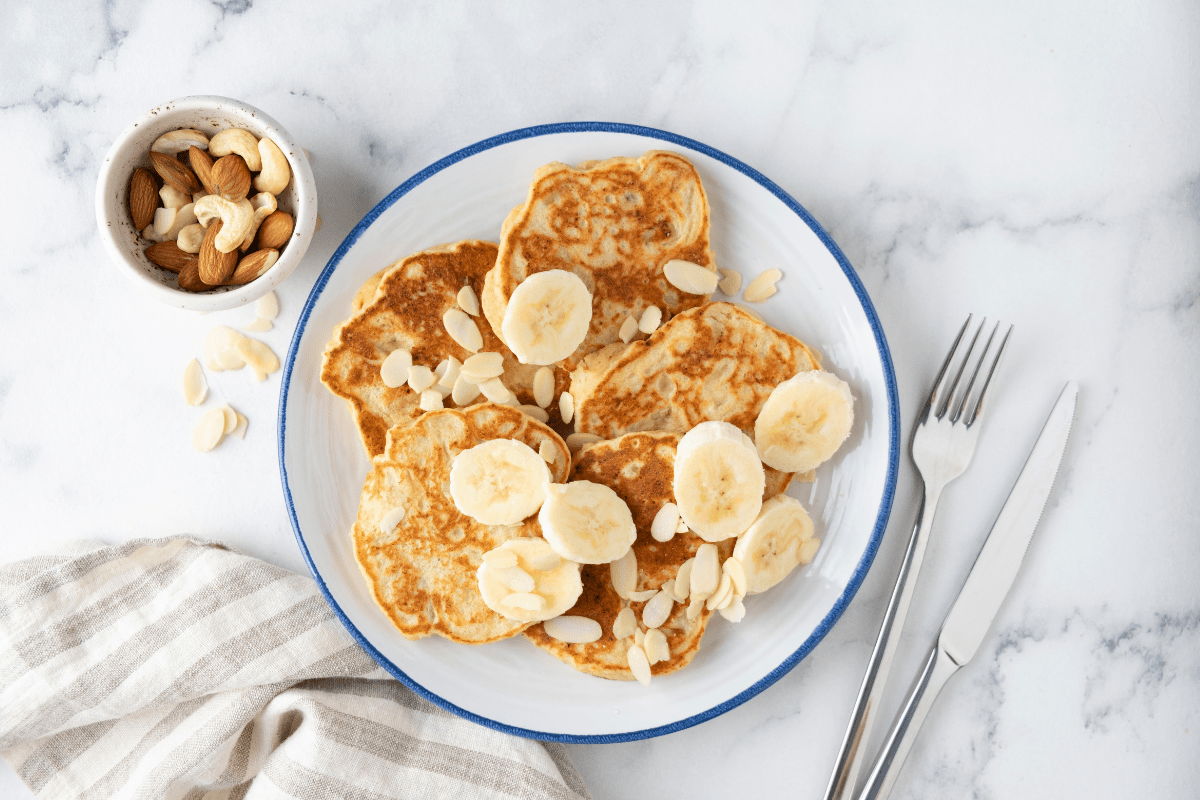We all know protein is important. But between rising grocery prices and confusing recommendations, figuring out how to get enough without emptying your wallet can feel overwhelming.
The truth is, you probably don't need as much protein as you think. And the best sources? They're not the expensive ones plastered all over Instagram. Let's break down exactly what you need and how to get it smart.
How much protein do you actually need?
Here's the thing about protein… most people think they need way more than they actually do.
The official recommendation is pretty straightforward. Most adults need about 0.8 grams of protein per kilogram of body weight each day. That translates to roughly 0.36 grams per pound, which means if you weigh 150 pounds, you're looking at around 54 grams daily.
But here's where it gets interesting. That number is basically the minimum to avoid deficiency… not necessarily what's optimal. If you're over 40, your needs bump up to about 1.0 to 1.2 grams per kilogram to fight off muscle loss. Active folks need even more, somewhere in the 1.1 to 1.5 range per kilogram.
Want to calculate your personal sweet spot? Take your weight in pounds, divide by 2.2 to get kilograms, then multiply by your activity factor:
- Sedentary? Use 0.8
- Weekend warrior? Go with 1.2
- Training for something serious? Maybe 1.5
The biggest myth floating around is that more protein automatically equals more muscle. Research shows anything beyond about 1.6 grams per kilogram doesn't really add much benefit for most people. You're literally just making expensive pee at that point.
Cost-effective protein sources you're probably overlooking
Your grocery budget doesn't have to break when you're trying to hit your protein goals. Some of the most affordable protein sources are sitting right there in the pantry, waiting for you to notice them.
Dried beans and lentils are the absolute champions here, costing as little as 0.8 to 2 cents per gram of protein. Compare that to chicken breast at around 25 cents per gram, and you're looking at serious savings. A half cup of cooked lentils delivers 9 grams of protein, while black beans pack 8 grams in that same serving.
Eggs used to be the go-to budget protein, but with prices jumping recently, they've become more expensive. That's where chicken thighs swoop in to save the day. They used to cost about half what chicken breasts did, but now they're nearly the same price while packing more flavor and staying tender during cooking.
Canned fish is another sleeper hit. A humble can of tuna delivers a protein punch at around $1 per 5-ounce can, giving you 40 grams of protein for less than what you'd spend on a fancy coffee. Sardines and salmon work too… they're not just for your grandmother's pantry anymore.
The versatility factor matters just as much as the price tag. Here's what makes these proteins work harder for your money:
- Chickpeas transform into creamy soup, falafel, hummus, or crispy snacks
- Lentils don't need soaking like other beans, just rinse and simmer for about half an hour
- Tofu picks up the flavor of whatever you pair it with and costs less than $3 for 14 ounces
- Canned beans save you time when dried versions feel like too much work
The real game changer? Buying dried legumes in bulk can cost multiples less than their canned counterparts.
Smart shopping strategies for protein
Your wallet doesn't have to take a beating just because you want to add more protein to your plate. The secret is getting smart about where and how you shop.
Buying in bulk is where the real magic happens… especially for shelf-stable proteins like dried beans, lentils, and canned fish. Research shows that buying in bulk can save shoppers 27% on average compared to smaller packages. Dried beans from the bulk section typically cost around $1.50 per pound, giving you way more bang for your buck than pre-packaged versions.
Generic brands are your best friend here. Store brands often contain the exact same protein content as name brands but cost significantly less. That fancy label isn't adding any extra nutrition to your chicken breast or Greek yogurt.
Always check the unit price tags on those little shelf labels. Sometimes the family-size package isn't actually the better deal… and you'll only know by comparing the cost per pound or per ounce. It's printed right there in tiny text, usually to the side of the main price.
Other money-saving moves:
- Frozen proteins often cost less per serving than fresh versions and last way longer
- Seasonal shopping works for protein too – canned salmon tends to be cheaper during certain times of year
- Stock up during sales – when chicken goes on sale, buying several pounds and freezing portions can slash your protein costs for months
Maximize protein from plant-based sources
Plant proteins get a bad rap for being "incomplete," but that's missing the bigger picture. Sure, most plants don't pack all nine essential amino acids in perfect proportions like meat or eggs do. But here's the thing… your body is smarter than that.
Complete proteins contain all nine essential amino acids your body can't make on its own. Most plant foods fall into the incomplete category, but there are some standout exceptions:
- Quinoa – complete protein that can hold its own against any steak
- Hemp seeds – nearly complete and brings a nutty flavor
- Soy products – tofu, tempeh, and edamame are all complete proteins
- Nutritional yeast – this golden, flaky superfood is nearly complete and brings a cheesy flavor that makes everything taste better
The beauty of plant proteins is in the mixing and matching. Your liver stores amino acids throughout the day, so you don't need to stress about perfect combinations at every meal. Throw some hemp seeds on your quinoa bowl, pair beans with rice, or spread almond butter on whole grain toast.
Budget-wise, dried legumes, lentils, and bulk quinoa will stretch your dollar further than any meat ever could.
Meal prep strategies that actually work
Meal prep isn't just about making Sunday a cooking marathon. It's about being strategic with your protein so you're not blowing your grocery budget on expensive cuts of meat or grabbing overpriced convenience foods when you're hungry.
Batch cooking methods for protein sources
Batch cooking is your secret weapon for affordable protein. Cook a whole chicken on Sunday, then shred it for tacos, toss it in salads, and mix it into pasta throughout the week. Same goes for a big pot of beans or lentils… they'll keep for days and cost pennies per serving.
The real magic happens when you think big. A slow cooker full of pulled pork becomes the base for sandwiches, breakfast hash, and burrito bowls. Ground turkey cooked with basic seasonings transforms into spaghetti sauce, taco meat, or breakfast sausage depending on what spices you add later.
Proper storage and portioning strategies
Your freezer is basically a money-saving machine. Portion out cooked proteins into single-serving containers or freezer bags. Label everything with dates because mystery meat from three months ago isn't appetizing.
Smart portioning means you're not accidentally eating a week's worth of protein in one sitting. A serving of meat is about the size of your palm, not your entire hand.
Store everything properly and your prep work pays off all week long. Cooked proteins stay fresh in the fridge for three to four days, which gives you plenty of time to transform them into completely different meals.
Add protein to meals you already make
The beauty of boosting protein isn't about overhauling your entire meal plan. It's about smart swaps that slide right into what you're already cooking.
Take your morning smoothie, for instance. A scoop of vanilla protein powder transforms that fruit blend into a legitimate meal that'll keep you satisfied until lunch. Same ingredients, same blender, but now you've got 20+ grams of protein working for you.
Greek yogurt is basically a protein superhero in disguise. Swap it for sour cream on your baked potato or in your taco night spread. You'll barely notice the difference taste-wise, but you've just added about 15 grams of protein to your plate.
Beans are your budget-friendly protein MVP. Toss a can of black beans into your regular soup recipe… boom, you've just added fiber and protein without changing the flavor profile. Same goes for chili, stews, even pasta dishes.
Quick protein boosts:
- Mix cottage cheese with your scrambled eggs for extra creaminess
- Throw hemp hearts on top of your oatmeal
- Add roasted chickpeas to your trail mix
- Stir a can of white beans into marinara sauce
These little tweaks add up fast, turning your regular meals into protein-packed versions of themselves without breaking the bank or your routine.
Affordable protein-rich snacks and quick meals
When it comes to simple snacks that pack a protein punch, eggs are basically nature's gift to busy people. Hard-boiled eggs are cheap, portable, and contain all the essential amino acids your body needs. One egg delivers about 6 grams of protein for roughly 25 cents.
But honestly, eating hard-boiled eggs every day gets old fast.
Trail mix is where things get interesting… and wallet-friendly. Making your own at home lets you control the protein content and skip the crazy markup you see in stores. A simple mix of peanuts, almonds, and sunflower seeds gives you around 8-10 grams of protein per quarter cup.
Cottage cheese is having a moment right now, and for good reason. It's loaded with casein protein, which digests slowly and keeps you satisfied longer. Mix it with frozen berries, sprinkle in some cinnamon, or go savory with cherry tomatoes and everything bagel seasoning. Each half-cup serving delivers about 14 grams of protein for under a dollar.
Smoothies might seem fancy, but they're actually budget goldmines if you do them right. A basic combo of frozen fruit, Greek yogurt, a scoop of peanut butter, and some milk gets you 20+ grams of protein. Buying frozen fruit in bulk keeps costs down.
Make the most of sales and seasonal opportunities
The smartest protein shoppers know that timing can slash your grocery bill in half. Stock up when chicken goes on sale for under $1 per pound. Buy family packs, portion them into meal-sized bags, and freeze immediately.
Fish is trickiest because it's seasonal and pricey, but late summer brings deals on salmon and tuna that you shouldn't pass up. Canned options are your year-round safety net… wild-caught salmon and sardines pack serious nutrition and never spoil when stored properly.
Fall is bean season. Dried legumes hit rock-bottom prices in September and October as harvest comes in. A $2 bag of black beans gives you the same protein as $15 worth of meat once you do the math.
Seasonal protein shopping calendar:
- Fall – stock up on dried beans and lentils
- Post-Thanksgiving – ground turkey often dips below chicken prices
- Winter months – eggs see their lowest prices when demand drops
- Late summer – best deals on fresh and canned fish
Common money-wasters to avoid
Protein bars might seem like the perfect grab-and-go solution, but they're often just overpriced candy bars in disguise. You're paying $3 for what amounts to a glorified snack when you could get the same protein from a hard-boiled egg that costs about 25 cents.
The premium meat trap gets everyone. Sure, that grass-fed ribeye looks amazing, but your muscles can't tell the difference between expensive cuts and budget-friendly options like chicken thighs or ground turkey. Your body breaks down all protein the same way… so why pay double?
Then there's the supplement rabbit hole. Walk into any nutrition store and you'll find rows of protein powders promising miraculous results. High-quality protein powders may be more expensive to purchase compared to whole-food proteins. For example, you could pay anywhere between $0.42-$2.90 per ounce for protein powder. But you can find protein-rich tofu at a grocery store for about $0.18 per ounce.
The real kicker? People often buy the most expensive protein powder thinking it's automatically better. Meanwhile, basic whey protein does the exact same job for half the price.
Avoid these protein budget busters:
- Premium cuts when budget options work just as well
- Protein bars as regular snacks
- Expensive protein powders with fancy marketing
- Stockpiling protein when it's "on sale" without checking expiration dates
The smartest approach is sticking to whole food sources first. Eggs, beans, Greek yogurt, and canned fish give you more bang for your buck than any processed protein product ever will.





